- Danielle Harlow
- Professor
- Engineering Explorations
- https://moxi.education.ucsb.edu/engineering-explorations
- University of California Santa Barbara
- Alexandria Muller
- https://www.alexandriamuller.com
- PhD Student
- Engineering Explorations
- https://moxi.education.ucsb.edu/engineering-explorations
- University of California Santa Barbara
- Allyson Randall
- Undergraduate Student
- Engineering Explorations
- https://moxi.education.ucsb.edu/engineering-explorations
- University of California Santa Barbara
- Ron Skinner
- Research & Evaluation Specialist
- Engineering Explorations
- https://moxi.education.ucsb.edu/engineering-explorations
- MOXI The Wolf Museum of Exploration + Innovation, University of California Santa Barbara
- Kaia Joye Wesolowski
- https://www.linkedin.com/in/kj-wesolowski/
- Director of Learning Experiences
- Engineering Explorations
- https://moxi.education.ucsb.edu/engineering-explorations
- MOXI The Wolf Museum of Exploration + Innovation
Public Discussion
Continue the discussion of this presentation on the Multiplex. Go to Multiplex





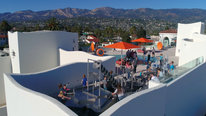
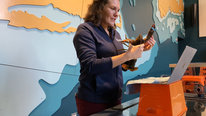
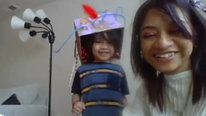
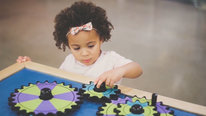
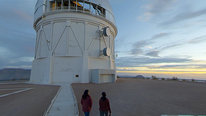
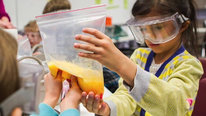
Danielle Harlow
Professor
Welcome! We're glad you stopped by to watch our video. Engineering Explorations is a collaborative 3-year National Science Foundation funded project that leverages partners from multiple education sectors (K-12 schools, interactive science centers, higher education, and afterschool programs) to provide engineering learning experiences for youth and increase local teachers’ capacity to deliver high quality engineering learning opportunities.
The primary development outcome goal of the Engineering Explorations project is to develop and test a set of 9 Engineering Explorations modules that link K-12 students’ school-based experiences to field trip experiences in a local interactive science center. Each Engineering Explorations module consists of one 50-minute field trip program completed at an interactive science center and curriculum for three 50-minute lessons to be implemented by the classroom teacher. Two are implemented before the field trip and one is implemented after the field trip program. The lesson plans for school teachers to complete before and after the field trip include educative curriculum materials to help teachers develop their capacity to introduce engineering in their classrooms. All activities are aligned with the Next Generation Science Standards (NGSS).
So far, we have developed and tested three field trip programs: (1) Riding the Rising Air - students develop ideas about balanced forces through designing and testing a craft that hovers in a rising column of air (2) Greenhouse on the Moon - students develop ideas about the transmission of infrared and visible light through materials by designing and testing a patch for a lunar greenhouse , and (3) Earthquake! Students develop ideas about resonance frequencies through designing bracing structures that dampens how much a structure wobbles in an earthquake.
Additional field trip programs under development focus on energy, electricity, and light through a challenge to design an efficient home lighting circuit; energy, electricity, and aerodynamics through a challenge to design wind turbine blades that optimize energy output; and forces and motion through separate challenges to create a balanced kinetic sculpture and to create a cardboard structure capable of supporting weight.
The field trips have been tested with over 5000 students and the classroom activities with 18 classrooms that represent California’s demographics. Evaluation focuses on student learning, teacher supports and students’ and teachers’ self-efficacy related to learning and teaching engineering.
We look forward to hearing your questions and feedback.
Stephen Uzzo
Chief Scientist
Danielle –
Sounds like you have been able to continue this work through the pandemic and I know that the work is ongoing, but what conclusions, even anecdotally have you drawn from this work? And do you intend to focus specific attention in these conclusions to underserved schools? They are likely to have less time and resources to do field trips and follow up lessons. Thanks!
Danielle Harlow
Danielle Harlow
Professor
Hi Stephen - During the pandemic, our work focused on development. The museum was closed and local schools were remote or not allowing additional people into their buildings. Our findings (from teacher interviews) from the first two years of testing indicated that teachers found the program valuable and appreciated the connections and supports for instruction connecting the field trip to their classrooms. Our observations of classrooms helped us to identify ways of adapting the initial lessons to better support students and teachers (e.g., changing materials to reduce prep time and ensure they were easily attainable). We will continue to test materials once the schools open back up and can bring students on field trips and will focus research and evaluation on student outcomes, specifically in underserved schools.
Stephen Uzzo
Chief Scientist
I'd love to hear more (maybe papers?) when you're ready. Really interesting work! Also, very interested in how you conducted your DBIR. Its always interesting to see how design changes across iterations
Danielle Harlow
Professor
Hi Stephen - We do have have some early publications from this work. I put them up on a website just for this event. You can find them here: https://moxi.education.ucsb.edu/publications
Billy Spitzer
PI
Danielle, I thought your project did a great job of integrating work in school and in the museum, and really appreciated hearing directly from some of the students. I would be interested to learn more about the evaluation and what your found -- what did you learn that could be used to improve the program in the future, and what were some of the impacts on the teachers and students?
Danielle Harlow
Ron Skinner
Research & Evaluation Specialist
Hi Billy, I'm glad you enjoyed the student talk. I personally always want to hear what the students are saying! The evaluation of classroom activities was done as part of our Design-based Implementation Research (DBIR) methods to inform the development and revision of curriculum. Data collection included field notes, video recordings, student work, and teacher surveys and interviews. Feedback on draft curricula was also collected from teachers. Revisions to the curriculum resulting from evaluation findings included simplification of activities, changes in choices of materials, reduction of teacher-centered instruction, differentiation for a variety of abilities, changes in language and graphical representation of data to target specific grade levels and be accessible to a wide range of abilities, and the addition of additional educative resources to support teachers in learning how to implement engineering design lessons in their classrooms. These changes have made the curriculum easier for teachers to implement and accessible to a broad audience of students.
Billy Spitzer
PI
Thanks Ron! I really like the DBIR approach, which in many ways parallels the engineering design process that the project is focused on. It's great that you are using multiple sources of evidence from students and teachers to create a robust picture of what is happening with students and teachers.
Allyson Randall
Danielle Harlow
Kemi Ladeji-Osias
This is an exciting way to build excitement for many ways to test and improve one's designs. Are the lesson plans that you have developed targeted at a particular age range? Are they available to other museums for adoption?
Danielle Harlow
Professor
Kemi - Thank you. Our lessons are targeted to grade level bands. That is, some are appropriate for grades 2-3 and others for grades 4-6. Because MOXI serves students in all grades, sometimes in back-to-back implementations, we design the museum experiences to be able to serve multiple age levels with few changes. The associated classroom activities are more targeted for specific grade levels and meet grade level standards. We have found that the engineering and science tasks can serve multiple grade levels if we adjust the math and reading/writing expectations. This is especially applicable to the types of data they collect and how we guide their analysis. The curricula for our first few modules are in the process of being edited and we anticipate that they will be available soon.
Allison Heaslet
Such a great video and program- thanks so much for sharing! How has the learning environment changed since COVID-19 and what kinds of changes were most effective for your program?
Allyson Randall
Undergraduate Student
Hi Allison, Thank you! We work in partnership with local schools and similar to your program, have been reliant on in-person programming. As Danielle mentioned, many local schools were remote throughout the pandemic or not allowing outside visitors onto their campuses. Having tested three of our programs with over 5000 students, the pandemic provided an opportunity for us to pivot our focus to development of additional programs. We look forward to testing these programs when the schools re-open for field trips.
Diana Acosta
Such great work connecting the classroom with the museum setting! Do you have any preliminary findings you can share about the student outcomes based on the first three programs?
Lauren Pagano
Allyson Randall
Undergraduate Student
Hi Diana, Thanks for the question. Analysis of teacher interviews has provided insight into teachers' perceptions of student learning outcomes from the programs. Teachers discuss opportunities for students to make real-world connections and develop 21st century skills through the engineering activities. Many mention communication and collaboration as key skills these programs have allowed their students to develop. Multiple teachers also mentioned students developing the ability to learn from "failure" as they optimize their designs. Teachers describe students as "engaged", "excited", and "involved" throughout the program. The engineering activities have also provided students a space to take initiative in their learning as teachers realize they can step back and allow the students to guide the process. Providing the classroom connection in addition to the museum field trip has allowed students to gain increased comfort with the engineering design process.
Lauren Pagano
Natalie Stapert
I find that the open-ended nature of the museum itself as well as the in-classroom follow up is a great strategy. The fact that we see young children so readily engaged in these engineering projects makes me excited for our generation's potential to tackle the problems we face. --Abigail, 8th grader, Washington DC
Allyson Randall
Ron Skinner
Research & Evaluation Specialist
What a great quote! Thanks for sharing. Children are born to be explorers and innovators, and they tend to jump fearlessly into these open-ended challenges. I share Abigail's sentiment that her generation will be able to tackle the problems of the future!
I feel the same way. - thanks for sharing.
Lauren Goff
It's so wonderful to see the kids asking questions and explaining their thinking- while having so much fun! Reading the above comment, I'd love to learn more about those conversations regarding failure- were any kids hesitant to continue? Were any kids more motivated to try a different technique? These type of engagement opportunities fuel this type of learning so well... I'm excited to learn more about your work! Well done!
Allyson Randall
Nickolay Hristov
Senior Scientist, Director, Associate Professor
I second your point and question, Lauren! We are so conditioned against failure or perceived negative outcomes in our work that we often miss important relationships and opportunities for understanding. The same can be said of the students and professional development for teachers here. Was there anything that did not work and gave you additional ideas for what to change or how to improve your understanding?
Likewise, the frames where students and teachers are not just smiling (simply to communicate happiness) seem much more meaningful for the engagement in the content and interactions. And a quick recommendation about the visual style of the presentation - the split-frame segments seem to take away from an otherwise carefully crafted peek into the project. Consider revising in future iterations of the video. So well done otherwise! Exciting project and very clever theme selections and project design. I would have wanted to be part of such a program!
Ron Skinner
Research & Evaluation Specialist
Hi Lauren,
We are currently analyzing how children persist through and learn from failure during the Engineering Exploration design challenges. One case study of a group of fourth grade boys in particular demonstrates the varying degrees to which failure can be observed in student behavior. Interestingly, in this one specific instance, there was a direct relationship between the severity of the student's response to failure and their creativity and innovation as they subsequently iterated their designs.
After taking a risk and failing, the students with minimal response (a shoulder shrug or a comment about wasted time) returned to their initial design ideas in subsequent iterations and did not make significant improvements. In contrast, one student who fell apart when his design failed (tears, pouting, isolation from the group, hesitation to re-engage, pessimism towards the group's second design) eventually re-engaged and made a final iteration of his initial design which incorporated learning from the group's failed design (that he had only observed and not participated in). His final design was one of the most innovative of the whole class.
His behavior was interpreted by many as being disruptive and the rest of his group was praised for their behavior and how well they completed the activity. When asked about the group's second design, he stated "we're failing." His comment was dismissed by both the group and the person asking the question. However, in analyzing the subsequent dialog, he appeared to have a clear idea of the criteria of the problem, a model for predicting the motion of the object being designed, and a sense that the constraint of time was critical. At one point he says "Do it! Test it! Right now!" This language is consistent with the engineering practice of testing prototypes early and often. His awareness of criteria and constraints and his use of a conceptual model to predict an outcome are also consistent with the practices of engineering. Yet his everyday language and behavior in dealing with failure were easily misinterpreted and his contributions to the group and final design were ignored.
We are working on understanding how children articulate emerging engineering practices through their everyday language, actions and gestures. This understanding will help teachers identify the alignment between students' everyday language and problem-solving skills and the practices of engineering, the most important of which is persisting through and learning from failure.
Eric Hamilton
Dear Moxi team, this is very instructive, and I have a home team appreciation for the work down the street from you at Pepperdine. Well, you know what I mean. I would love to find a way that we could fully virtualize your project and implement it internationally, but that is not realistic because of the central role of the museum. Still, would be interesting to dream. And I like the project because our family dog was named Moxie when I was growing up. All extraneous. You have a great project, and thank you.
Ron Skinner
Research & Evaluation Specialist
Hi Eric,
Thanks for your comments. We hope that our project serves as a model of how informal institutions of all sorts can create programs that link the field trip experience to classroom learning. Go Waves!
Cristine Legare
Love the integration of formal and informal learning! What sorts of variation have you seen across different kinds of physical systems in learning and engagement?
Danielle Harlow
Professor
Hi Christine - Thanks for your question. I was wondering if you could clarify what you mean by different physical systems? Do you mean the difference between how students learned in the museum setting compared to how they learned in the school setting? Or do you mean how they learned using different physical objects for different field trip experiences? Or did you mean something else? Thus far, for this project, we haven't done much comparison across settings. Instead, we've been trying to make sure that the learning across the multiple settings collectively lead to productive outcomes. But, we do intend to do more research in the upcoming year and will investigate additional research questions.
Cristine Legare
Happy to clarify :) I meant different kinds of physical science exhibits in the museum (exhibits about fluid mechanics vs gear mechanics, etc).
Danielle Harlow
Professor
Hi Christine - Thank you for your clarification. We didn't look at the difference between the exhibits since each field trip just used one exhibit. But that is such an interesting question. One of my graduate students did a project a few years ago looking at how the different physical features of some of the exhibits focused on light afforded different types of interactions among children. MOXI's exhibits are intentionally designed to be open ended and each support many different types of learning. So, we see great variation in the learning among guests at each exhibit. We have a paper that describes the differences in learning at one exhibit but that is not connected to the engineering explorations project. The link to the article is here: https://dl.acm.org/doi/pdf/10.1145/3141798.3141...